Research Symposium
22nd annual Undergraduate Research Symposium
Ethan Aguilar Poster Session 1: 9:00-9:45/Poster #23

BIO
My name is Ethan Aguilar and I am from San Antonio, TX. My future career goals once I graduate are to go to medical school and specialize in radiology.
Purification of KSHV Proteins
Authors: Ethan Aguilar, Dr. Fanxiu ZhuStudent Major: Neuroscience
Mentor: Dr. Fanxiu Zhu
Mentor's Department: Department of Biological Science Mentor's College: Florida State University Co-Presenters:
Abstract
The overall research that I am a part of works on the study of the proteins of the tegument layer of the Kaposi Sarcoma Associated Herpesvirus (KSHV). These proteins play important key roles in how the KSHV evades detection by pathogen recognition receptors in cells of the human body. Thus, this research has important potential applications for the creation of vaccines and other antiviral medications. The creation of these vaccines and antiviral medication is extremely important since KSHV is one of the main opportunist viruses that afflict people who are immunocompromised. My specific role in this research so far has been in assisting in the creation of western blots of gels that have been loaded with samples of bacteria. The process of creating the wester blots starts with the creation of the gel using resolving gel solution, stacking gel solution, 10% APS, and TEMED. Once the gel is solidified, electrophoresis is performed on the gel to determine the sizes of the proteins expressed by the samples of bacteria. After this, the gel contents are transferred onto a nitrogenous membrane. Following this, the membrane is washed numerous times and different antibodies are added to the membrane. The purpose of these washing and addition of antibodies is to make the membrane have extremely specific signaling for the proteins that we are looking for. The purpose of these western blots is to determine how well the types of bacteria will function as model organisms for future research involving protein purification.
Keywords: KSHV, Protein Purification, herpesvirus
22nd annual Undergraduate Research Symposium
Nikki Kanakis Poster Session 1: 9:00 - 9:45/Poster #36

BIO
I am a second year student at FSU studying environmental science and policy, with a minor in urban and regional planning, and a certificate in emergency management and homeland security. I am from New Port Richey, Florida, and was inspired to apply to the Undergraduate Research Opportunity Program after enjoying going through the AP Capstone program at my high school. My research interests include current environmental issues, as well as environmental education in the public school system. In the future, I hope to pursue a career with the US National Park Service or as a transportation planner.
Developing Video Content to Engage Students in STEM
Authors: Nikki Kanakis, Hannah HiesterStudent Major: Environmental Science and Policy
Mentor: Hannah Hiester
Mentor's Department: Department of Biological Science, Office of STEM Teaching Activities Mentor's College: College of Arts and Sciences Co-Presenters: Justin Gonzalez, Sylvia Long, Renee Souvenir
Abstract
In the growing digital age, videos are a useful source of accessible learning material. However, it is important to design and use videos effectively to maximize benefit to the learner and to avoid misusing technology. The purpose of this study is to create guidelines for instructors to use in the creation of multimedia video lessons, specifically focusing on STEM subjects. These guidelines direct instructors to design videos that support effective learning through consideration of essential and generative processing, motivation, and elimination of extraneous elements. The guidelines were constructed through a comprehensive literature review of multimedia video learning and video design, examining the effects of video structure, modes of instruction, emotion and motivation, and other aspects of video learning. In addition, this study included designing and creating sample videos that adhere to the guidelines. Overall, the guidelines are a useful tool for STEM education, providing a baseline for the creation of impactful videos.
Keywords: video, STEM, teaching
22nd annual Undergraduate Research Symposium
Kira St. Juste Poster Session 5: 1:30-2:15/Poster #55

BIO
Since I was eleven I've known I wanted to be a neuroscientist and have strived to work towards that dream with everything I do. I haven't had much experience in research in my earlier career so getting the opportunity to finally be involved in something I've only seen from afar has been an incredible journey. My two semesters here so far have only furthered my desire to continue in research and am currently pursuing my B.A in Cellular and Molecular Neuroscience. I'm ecstatic to see where my further research career continues.
Effects of menstrual cycle phase on the association between the neural response to rewards and anhedonia
Authors: Kira St. Juste, Elizabeth MulliganStudent Major: Cellular and Molecular Neuroscience
Mentor: Elizabeth Mulligan
Mentor's Department: Psychology Department Mentor's College: College of Arts and Sciences Co-Presenters:
Abstract
Depression is a debilitating psychiatric disorder that substantially impacts both
individuals and society. Incidence of depression is doubled in women as compared to
men, so it is important to understand biological factors that may increase depression in
women. Anhedonia, or a loss of pleasure, is a core symptom of depression that has
been associated with blunted neural responses to reward (i.e., the reward positivity
[RewP]); however, there is a lack of research examining the effects of the human
menstrual cycle on this association. In the present study, we sought to examine whether
the RewP-anhedonia association differed as a function of menstrual cycle phase (early
follicular, ovulatory, and mid-luteal) in 73 women. Participants completed a baseline
study visit wherein self-reported anhedonia symptoms were collected. Next, during
each cycle phase, participants’ brain responses to monetary loss and gain feedback
were monitored using EEG during a gambling task. Results indicated a significant
association between a blunted RewP and increased anhedonia symptoms while women
were in the ovulatory phase of their cycle; there were no RewP-anhedonia associations
during early follicular and mid-luteal phases. Our study provides novel evidence that the
RewP-anhedonia association may be specific to when the RewP is measured in the
ovulatory phase in women. The ovulatory phase is characterized by high estrogen—a
hormone suggested to enhance reward sensitivity. Thus, lack of sensitivity to the
reward-bolstering effects of estrogen may be associated with increased depression. Our
results also underscore the importance of accounting for menstrual cycle phases in
event-related potential studies.
Keywords: Menstrual cycle, reward positivity, anhedonia, RewP-anhedonia, EEG
22nd annual Undergraduate Research Symposium
Mausam Jariwala Poster Session 4: 12:30-1:15/Poster #66

BIO
I am from Orlando, Florida, and attending Florida State University to pursue Public Health. I am on the Pre-Health Track because I intend to go to medical school after my undergraduate degree. I am interested in a wide variety of research. My main goal is to understand and learn how proper research is conducted so I can later conduct my own research. When I attempt my own research, I want to lean more towards science and work in a lab.
Reading Swastika: Understanding Symbolic Contestations and Other Symbols Perceived to Signify Hatred
Authors: Mausam Jariwala, Pooja IchplaniStudent Major: Public Health
Mentor: Pooja Ichplani
Mentor's Department: College of Communication and Information Mentor's College: College of Communications and Information Co-Presenters:
Abstract
The purpose of this study is to explore the swastika and other antisemitic symbols, such as the burning cross and SS bolt, and how people react to them. The main focus of the study is the swastika and how the meaning of this symbol has expanded and changed. The swastika used to be a good symbol because it used to be perceived as good fortune. Even today, it is still used as a good symbol in many Asian countries. In our study, each hate symbol was analyzed to see if people's reaction to the symbols was based on a cultural or religious standpoint. The Swastika had the most negative reaction because it was related to the Nazis. The Burning cross was mostly used as a tactic to spread awareness and express people's political views so it was not much of a threat symbol. The SS bolt is used as a symbol of white supremacy. From this, we found it was based on a cultural aspect. As this study continues, we will gather an understanding of the relations of hate symbols and cultural backgrounds. The cultural view of a person deeply affects how a symbol is portrayed.
Keywords: Swastika, Burning Cross, SS Bolt, Hatred, Iconography
22nd annual Undergraduate Research Symposium
Jessica Diaz Poster Session 1: 9:00-9:45/Poster #53

BIO
Born in Santander, Spain, and raised in Miami, FL, Jessica Diaz has been inspired by the different cultures and by the arts since she can remember. Currently a second-year student pursuing a BA in Art History with a minor in Museum Studies, Diaz aspires to work as a museum educator overseas. Her experience with UROP has granted her an introduction to conducting research and has sparked an interest in historical documentation, specifically through photography.
The Photographic Narrative of Henrietta Swope
Authors: Jessica Diaz, Ronald E. DoelStudent Major: Art History
Mentor: Ronald E. Doel
Mentor's Department: Department of History Mentor's College: College of Arts and Sciences Co-Presenters:
Abstract
After the invention of cameras and photography, photographers gained a new ability to document the practice of science and advances which scientists made. Many earlier historical accounts of scientists and scientific practice emphasized what white males had achieved--shaping a narrative that white men and science were synonymous. Marginalized groups were neglected--not only their findings, but how they were represented. Could historical photographs tell richer and more encompassing stories, and reveal the contributions of women and minorities? To understand the lengths of the lack of representation of minorities, specifically women, I decided to investigate the life and career of Henrietta Swope, an astronomer at the Harvard College Observatory. Through a close examination of detailed notes and letters regarding Swope’s professional and personal life, and the photographs she made of colleagues, I provide a case study-like analysis of the neglect women faced when being represented in historical photographs in the early decades of the twentieth century. Additionally, analyzing photographs in which she appeared demonstrates that oftentimes men were prioritized in these images, further reinforcing the narrative that science was male-dominated. Swope’s own photographs stand in contrast to those produced by her male colleagues and provide evidence for an alternative narrative of discovery and participation in science in which women enjoyed more active, professional roles.
Keywords: Photography, History, Women in STEM
22nd annual Undergraduate Research Symposium
Kaleela Rosenthal Poster Session 6: 2:30-3:15/Poster #47
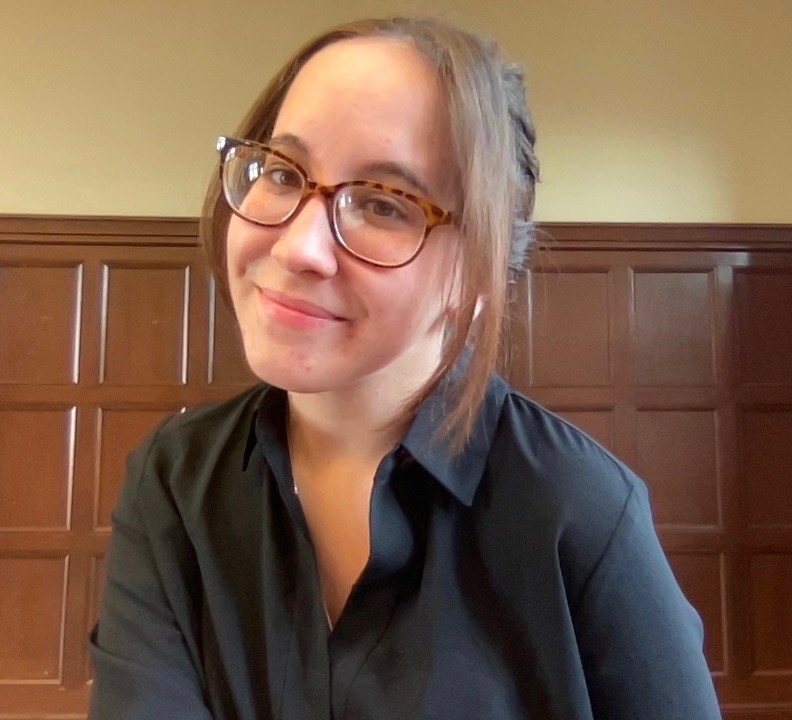
BIO
Kaleela is a first-year student at FSU studying Public Health and minoring in Philosophy & Law from Coral Springs, FL. Her research interests include health and safety promotion and policy as well as educational development. She enjoys watching foreign movies and learning new languages in the process.
Highly Active Advocates: A Phenomenological Study with School-Based Speech-Language Pathologists
Authors: Kaleela Rosenthal, Victor A. LugoStudent Major: Public Health
Mentor: Victor A. Lugo
Mentor's Department: College of Communication Sciences and Disorders Mentor's College: College of Communication Sciences and Disorders Co-Presenters:
Abstract
School-based speech-language pathologists (SLP) carry a plethora of responsibilities, one of many being to effectively advocate for or against issues pertaining to themselves and their students.
Currently, in the state of Florida, SLPs face heavy caseloads and a lack of cooperation from other levels of leadership and policy-making in public education. Challenges in effective advocacy and self-efficacy have been shown to be an issue for both experienced and inexperienced SLPs alike. With adequate professional training, mentorship, and administrative cooperation and transparency can school-based SLPs and beyond properly facilitate their services to their students. Deciphering which methods work best to implement advocacy skills to current and prospective SLPs in order to overcome challenges effectively.
Keywords: self-efficacy, SLP, advocate
22nd annual Undergraduate Research Symposium
Sofia Bernal Poster Session 1: 9:00 - 9:45/ Poster #4

BIO
Sofia Bernal is a sophomore FSU undergraduate student pursuing a dual degree in Psychology and Marketing. In UROP, she is currently studying how social media can trigger positive and negative emotions such as shame, guilt, pride, and happiness on various platforms. She was awarded the IDEA Grant and will continue researching social media as it pertains to body image and Greek Life here at FSU. Sofia plans to continue researching throughout her undergraduate years and plans to pursue a Master's degree in Psychology.
Emotions and Social Media Use: Youth Experiences of Different Online Phenomena
Authors: Sofia Bernal, Vanessa DennenStudent Major: Psychology
Mentor: Vanessa Dennen
Mentor's Department: Department of Educational Psychology and Learning Systems Mentor's College: College of Education Co-Presenters: Martina Rojas
Abstract
Social media has become more prominent in the 21st century and has facilitated easier modes of communication. However, with the emergence of social media, many individuals have started associating social media in both a negative and positive light. This study investigates possible correlations between social media and feelings of negative and positive emotions while also conducting a meta-analysis to investigate trends that are related to this field of study. The objective of this research was to investigate why individuals experience these varieties of emotions and provide more knowledge to this current field of literature. Additionally, it is also a way to provide more knowledge than what is known about current studies. Participants involved in this study were asked to complete a Qualtrics survey that offered in-depth questions about emotions experienced while doing certain tasks on social media. Afterward, participants were asked two long answer questions about one time they experienced both positive and negative emotions while on social media
Keywords: social media, emotions, psychology, shame, youth
22nd annual Undergraduate Research Symposium
Amanda Ravins Poster Session 1: 9:00 - 9:45/Poster #46

BIO
Amanda Ravins is a Sophomore at Florida State University, and she is currently double majoring in Psychology and Spanish. She is interested in research in the area of Special Education and is currently a part of FSU’s Undergraduate Research Program. She plans to receive her Master’s degree in Special Education, and her goal is to have a career in Elementary Special Education and to complete research in this area in the future.
Peer-Mediated Modified Schema Based Instruction Targeting Mathematical Problem Solving for Students with Extensive Support Needs
Authors: Amanda Ravins, Deidre GilleyStudent Major: Psychology and Spanish
Mentor: Deidre Gilley
Mentor's Department: Department of Special Education Mentor's College: College of Education Co-Presenters: Bianca Hamm
Abstract
The purpose of this study was to evaluate peer-mediated modified schema based instruction (MSBI) on the mathematical word problem solving of secondary-aged students with extensive support needs (i.e., autism spectrum disorder, intellectual disability, multiple disability). In this QUAN-qual mixed methods single case research (MMSCR) design, participants include five peer mentees with ESN and four peer mentors without disabilities across four phases (i.e., baseline, intervention, generalization, and maintenance). This study is evaluating the independent variable of MSBI on three dependent variables including: critical steps completed independently correct, number of word problems solved independently correct, and total number of steps completed independently correct. The research team is using a multiple-probe across participants design for their quantitative analysis and descriptive statistics, thematic analysis, and triangulation of multiple sources for their qualitative analysis. The research team is conducting this MMSCR to add “narrative flesh on the bones of experimental and statistical analysis” to support replication and generalization (Onghena et al., 2019). By doing this, they are evaluating the casual relationship between the independent and dependent variables as well as conducting in-depth investigation of the practical significance of the intervention (Kazdin, 1999; Perdices et al, 2009) as well as the perceived feasibility, appropriateness, and meaningfulness of the intervention (Onghena et al., 2019). Their results are consistent with previous MSBI research and currently represent a functional relation between the intervention and the primary dependent variable. This study is ongoing. Thus, further reports of limitations, generalization, and maintenance data will be disclosed in the future.
Keywords: Peer-Mediated, Mathematics, Extensive Support Needs
22nd annual Undergraduate Research Symposium
Bianca Hamm Poster Session 1: 9:00 - 9:45/Poster #46
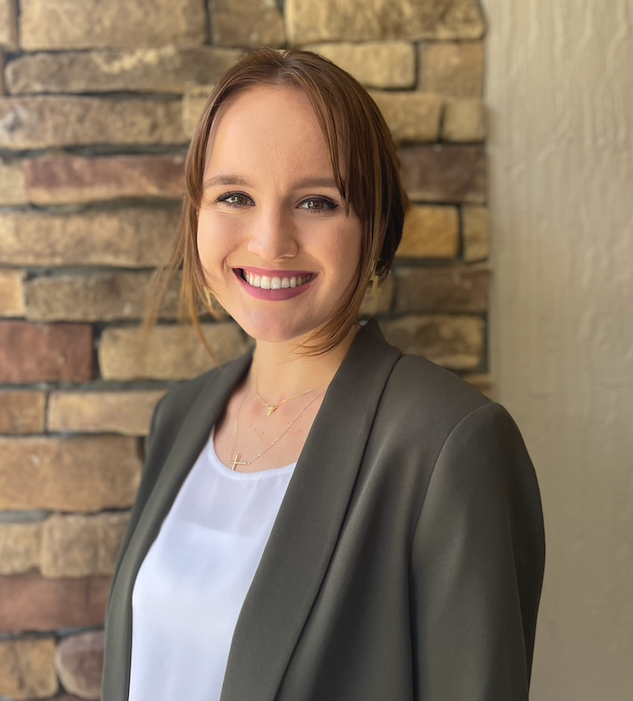
BIO
I am currently a second-year student at Florida State University from Jacksonville, Florida. I am majoring in Communication Science and Disorders with minors in Psychology and Child Development. I am currently a 2022 Orientation Leader, Peer Navigator, future UROP leader and a member of the General Curriculum Access Lab. I am assisting doctoral student Deidre Gilley with her research regarding mathematical problem solving for students with extensive support needs. I plan to become a Speech Pathologist with a focus on autism spectrum disorders. I also hope to conduct research related to improving communication techniques for those with language disorders.
Peer-Mediated Modified Schema Based Instruction Targeting Mathematical Problem Solving for Students with Extensive Support Needs
Authors: Bianca Hamm, Dr. Jenny RootStudent Major: Communication Science & Disorders
Mentor: Dr. Jenny Root
Mentor's Department: School of Teacher Education Mentor's College: College of Education Co-Presenters: Lily England, Amanda Ravins and Emily Dillion
Abstract
The purpose of this study was to evaluate peer-mediated modified schema based instruction (MSBI) on the mathematical word problem solving of secondary-aged students with extensive support needs (i.e., autism spectrum disorder, intellectual disability, multiple disability). In this QUAN-qual mixed methods single case research (MMSCR) design, participants include five peer mentees with ESN and four peer mentors without disabilities across four phases (i.e., baseline, intervention, generalization, and maintenance). This study is evaluating the independent variable of MSBI on three dependent variables including: critical steps completed independently correct, number of word problems solved independently correct, and total number of steps completed independently correct. The research team is using a multiple-probe across participants design for their quantitative analysis and descriptive statistics, thematic analysis, and triangulation of multiple sources for their qualitative analysis. The research team is conducting this MMSCR to add “narrative flesh on the bones of experimental and statistical analysis” to support replication and generalization (Onghena et al., 2019). By doing this, they are evaluating the casual relationship between the independent and dependent variables as well as conducting in-depth investigation of the practical significance of the intervention (Kazdin, 1999; Perdices et al, 2009) as well as the perceived feasibility, appropriateness, and meaningfulness of the intervention (Onghena et al., 2019). Their results are consistent with previous MSBI research and currently represent a functional relation between the intervention and the primary dependent variable. This study is ongoing. Thus, further reports of limitations, generalization, and maintenance data will be disclosed in the future.
Keywords: Education, Disability, Math, Students
22nd annual Undergraduate Research Symposium
Jasmine Burelsmith Poster Session 6: 2:30 - 3:15/Poster #36
BIO
Jasmine Burelsmith is from the greater-Houston area and has danced since the age of three. She is currently pursuing her BFA in Dance and minoring in Art History and General Business. Beyond that, she is involved on campus as a member of the College of Fine Arts Leadership Council, Community Arts Initiative, Phi Eta Sigma, and hopes to be inducted into the Hispanic Honor Society this semester. Outside of school, she performs with the Tallahassee Ballet as a company member and teaches youth ballet classes.
Behind the Table
Authors: Jasmine Burelsmith, Calypso HaddadStudent Major: Dance
Mentor: Calypso Haddad
Mentor's Department: Dance Department Mentor's College: Florida State University Co-Presenters: Sophia Pfitzenmaier
Abstract
Musical theatre, specifically broadway dance, has emerged from a problematic past. Thus, this research questions what broadway dance is and how collaborators receive credit for their contributions. These concepts are explored creatively through a choreographic work that brings to light the frustrations of those in front of the table. Historically, white males have been the lead creatives, driving a theatrical production from behind the table. Therefore, this work illuminates the intricate relationships of those not in positions of power and infers the emotional and physical strain endured by dancers. Beyond that, choreography is often collaborative during the early creative process where each individual would and should normally receive credit for their
contribution throughout the process. This work brings forward what is incorrect with the ladder of theatre workshops. Within the production team and dancers, acknowledgment is crucial and necessary in order to further succeed in the industry. This concept rings true at every level of the production hierarchy.
Keywords: musical theatre, dance, minority representaion
22nd annual Undergraduate Research Symposium
Justin Richard Poster Session 6: 2:30 - 3:15/Poster #42
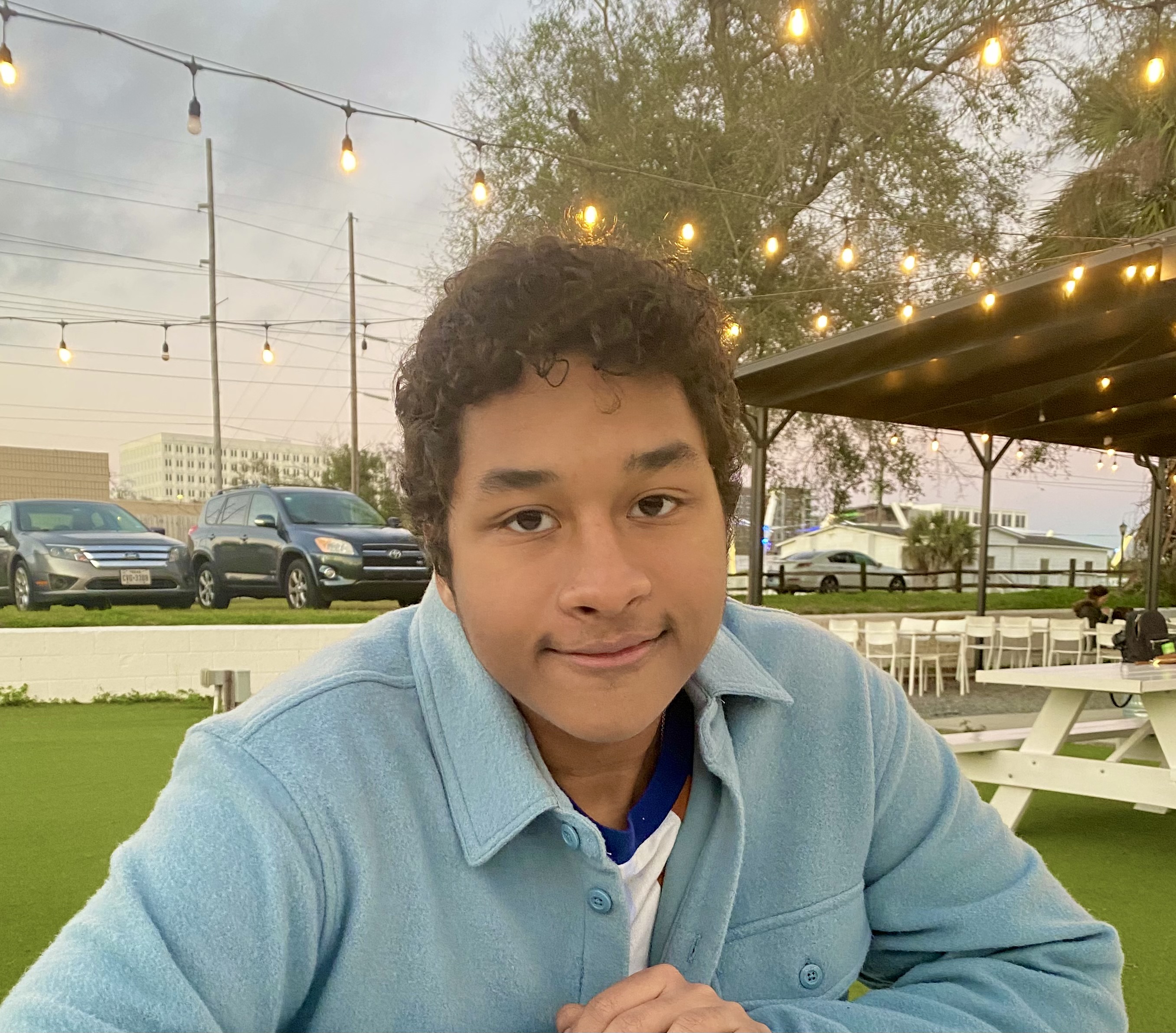
BIO
Justin Richard is a second-year Florida State student pursing a double degree in Psychology and Marketing. As part of the Undergraduate Research Opportunity Program, he has aided a graduate student with her longitudinal study on how interracial friendships impact disadvantaged group members' collective action intentions over time. Justin is planning on continuing to work in the Plant Lab in the future, focusing primarily on research related to social psychology.
How Do Interracial Friendships Impact Disadvantaged Group Members’ Collective Action Over Time?
Authors: Justin Richard, Kristina ChamberlinStudent Major: Psychology & Marketing
Mentor: Kristina Chamberlin
Mentor's Department: Department of Psychology Mentor's College: College of Arts and Science Co-Presenters: Mara Broderick
Abstract
Previous research has shown that positive contact with dominant group members can undermine collective action for social change (e.g., protest) amongst discriminated group members (e.g., Wright & Lubensky, 2009). The present work replicates this effect, but also integrates the idea that perceiving White friends to be high (vs. low) in antiracism, or the belief that one must personally and proactively combat inequality (Lacosse et al., 2021), should increase collective action. It also looks into mechanisms by which contact and perceived antiracism impact collective action such as anger about inequality and social movement identification (van Zomeren et al., 2008). This study focused on Black and Latino students at Florida State University who completed a series of questionnaires measuring each variable in Fall 2021. Results showed that perceived antiracism of White friends was positively associated with intended collective action and that positive contact with White people was negatively associated with intended collective action. In addition, positive contact was negatively associated with anger about inequality and perceived antiracism was positively associated with anger about inequality. Perceived antiracism was also positively associated with social movement identification and positive contact was negatively associated with social movement identification. Finally, social movement identification and anger about inequality were each positively correlated with intended collective action. We then discuss the meaning of these results and future directions.
Keywords: antiracism, collective action, interracial friendships
22nd annual Undergraduate Research Symposium
Wendy Rodriguez Poster Session 4: 12:30-1:15/Poster #47
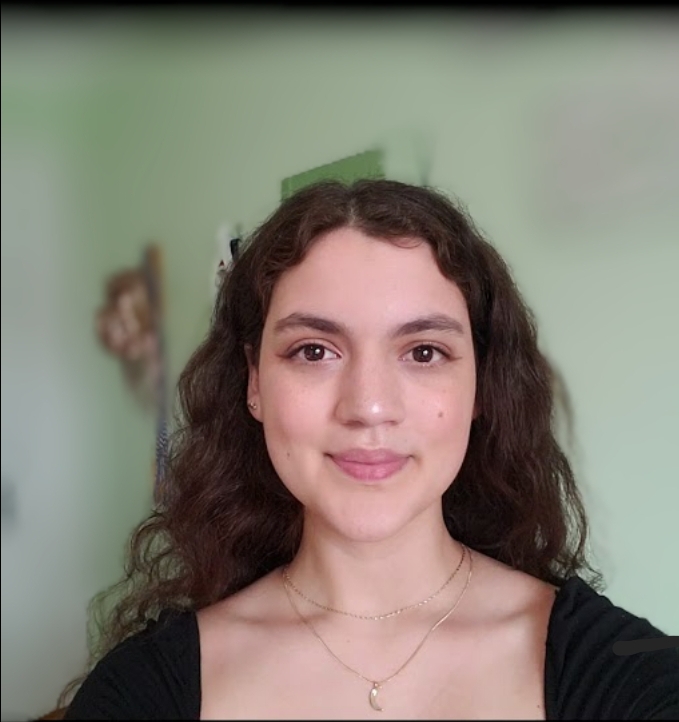
BIO
Wendy Rodriguez is a third-year Florida State University student pursuing a degree in Psychology with minors in Child Development and Retail Operations. As a UROP student, she assisted on a randomized controlled trial for a web-based intervention targeting individuals who have previously experienced tonic immobility as a trauma response. Wendy is planning to continue exploring cognitive research with a focus on suicidality and neurobehavioral disorders in hopes of pursing a PhD in clinical psychology with an emphasis in child psychology.
Examination of Tonic Immobility in a Lab-Based Experimental Paradigm
Authors: Wendy Rodriguez, Danielle MorabitoStudent Major: Psychology
Mentor: Danielle Morabito
Mentor's Department: Psychology Mentor's College: Florida State University Co-Presenters:
Abstract
Research in the area of threat responding has modeled a continuum of autonomic, survival-based behaviors including the stages of freeze, fight, and flight (Barlow, 2002; Bradley et al., 2001; Lang et al., 1997). Tonic immobility (TI) is a type of freeze response characterized by continued motor and vocal inhibition. The present study aims to gain a better understanding of the physiological reactions and subjective experiences of TI by examining the associations between self-reported TI and postural sway in participants with previous trauma exposure. Participants completed self-reported measures assessing tonic immobility experienced during the individual’s worst trauma, across stressful experiences, and in response to a laboratory-based task, among other psychological correlates. The image-viewing task consisted of a series of neutral and affective images while assessing for postural sway recorded through the Nintendo Wii Balance board (WBB). Multiple linear regression analyses indicated prior experience of TI significantly predicted a reduction in postural sway when viewing mutilation images as opposed to neutral and positive images, as well as significantly predicting self-reported tonic immobility. Understanding the motor attribute of TI holds implications for future research examining freeze responses in trauma-exposed populations.
Keywords: Trauma response, freeze response, tonic immobility
22nd annual Undergraduate Research Symposium
Kaylyn Myers Poster Session 4: 12:30-1:15/Poster #23

BIO
A driven pre-medical student with a focus on medicine, and 2 years experience in research. Community-geared thinker and team-player. Class of 2025 Presidential Scholar and member of the Phi Eta Sigma National Honor Society.
In the Nick of Time: Understanding the Eviction of an Assembly Chaperone Hsm3 from 26S Proteasomes
Authors: Kaylyn Myers, Dr. Antonia NemecStudent Major: Biochemistry
Mentor: Dr. Antonia Nemec
Mentor's Department: Biomedical Sciences Mentor's College: Florida State University College of Medicine Co-Presenters:
Abstract
The proteasome is a complex cellular machine that is responsible for destroying unneeded or unwanted proteins. The proteasome consists of three subcomplexes: the lid, base, and core particle. Each subcomplex can assemble on its own before combining to form mature proteasomes. Under normal conditions, the assembly of the base is controlled by four chaperone proteins. However, how the chaperones are evicted prior to assembly of mature proteasomes is not well understood. We established a transition metal Förster resonance energy transfer (TM-FRET) assay to monitor the eviction of one of these chaperone proteins, Hsm3 from its binding partner in the base, Rpt1. We first produced a single-cysteine version of Hsm3 for labeling at a defined site with the small molecule fluorophore TAMRA. We next engineered two histidines into an α-helix of the base subunit Rpt1 near the Hsm3 binding site to create a Ni2+ chelating site. We performed growth assays on these mutants to confirm that they fully complemented deletion strains, indicating the mutations were innocuous. We will use this TM-FRET system to understand how Hsm3 is evicted during proteasome biogenesis. Proteasome dysfunction has been implicated in several diseases, and is a validated drug target in treating multiple myeloma. Understanding proteasome assembly, and specifically chaperone eviction, can be exploited in developing novel drugs.
Keywords: Medicine, Biochemistry, Microbiology
22nd annual Undergraduate Research Symposium
Aaliyah Ferguson Poster Session 1: 9:00-9:45/Poster #35

BIO
I am a transfer student from Ft. Lauderdale, FL. My aspirations is to move on to graduate school and then become a child psychologist.
Risky Alcohol Use and Stress in African American College Students
Authors: Aaliyah Ferguson, Laura Reid MarksStudent Major: Psychology
Mentor: Laura Reid Marks
Mentor's Department: Department of Educational Psychology and Learning Systems Mentor's College: College of Education Co-Presenters:
Abstract
According to the National Institute of Alcohol Abuse and Alcoholism (NIAAA; 2021), thousands of college students are hospitalized each year for alcohol overdose. This occurs when there is an overwhelming amount of alcohol in the bloodstream that causes areas of the brain controlling basic life support functions to begin to shut down. Symptoms may include breathing, heart rate and temperature control. According to the NIAAA, “Almost 53 percent of full-time college students ages 18 to 22 drunk alcohol in the past month and about 33 percent engaged in binge drinking during that same time frame.” These statistics tell us that the abuse of alcohol is prevalent throughout colleges and universities.
Although there are many studies regarding college students and their urge to drink and risky alcohol behaviors. A lot of these research projects don't focus enough on African American undergraduate students and the ways in which their stress may influence risky alcohol use. For this poster, we will present a literature review on alcohol use and stress in African American students. We will discuss limitations, as well as implications and future research.
Keywords: "Stress" "African American" "Alcohol"
22nd annual Undergraduate Research Symposium
Emily Dillon Poster Session 6: 2:30 - 3:15/Poster #46
BIO
I am a second-year student at Florida State majoring in communication science and disorders. I hope to become a speech pathologist, and I want to pursue research after I establish myself as a clinician. I am specifically interested in researching and working with individuals with intellectual disabilities.
Peer-Mediated Modified Schema Based Instruction Targeting Mathematical Problem Solving for Students with Extensive Support Needs
Authors: Emily Dillon, Deidre GilleyStudent Major: Communication Science & Disorders
Mentor: Deidre Gilley
Mentor's Department: School of Teacher Education Mentor's College: College of Education Co-Presenters: Bianca Hamm, Lily England, Amanda Ravins
Abstract
The purpose of this study was to evaluate peer-mediated modified schema based instruction (MSBI) on the mathematical word problem solving of secondary-aged students with extensive support needs (i.e., autism spectrum disorder, intellectual disability, multiple disabilities). In this QUAN-qual mixed methods single case research (MMSCR) design, participants include five peer mentees with ESN and four peer mentors without disabilities across four phases (i.e., baseline, intervention, generalization, and maintenance). This study is evaluating the independent variable of MSBI on three dependent variables, including critical steps completed independently correct, number of word problems solved independently correct, and total number of steps completed independently correct. The research team is using a multiple-probe across participants design for their quantitative analysis and descriptive statistics, thematic analysis, and triangulation of multiple sources for their qualitative analysis. The research team is conducting this MMSCR to add “narrative flesh on the bones of experimental and statistical analysis” to support replication and generalization (Onghena et al., 2019). By doing this, they are evaluating the casual relationship between the independent and dependent variables as well as conducting in-depth investigation of the practical significance of the intervention (Kazdin, 1999; Perdices et al, 2009) as well as the perceived feasibility, appropriateness, and meaningfulness of the intervention (Onghena et al., 2019). Their results are consistent with previous MSBI research and currently represent a functional relation between the intervention and the primary dependent variable. This study is ongoing. Thus, further reports of limitations, generalization, and maintenance data will be disclosed in the future.
Keywords: Peer-mediated, Mathematics, Extensive Support Needs
22nd annual Undergraduate Research Symposium
Lily England Poster Session 6: 2:30 - 3:15/Poster #46
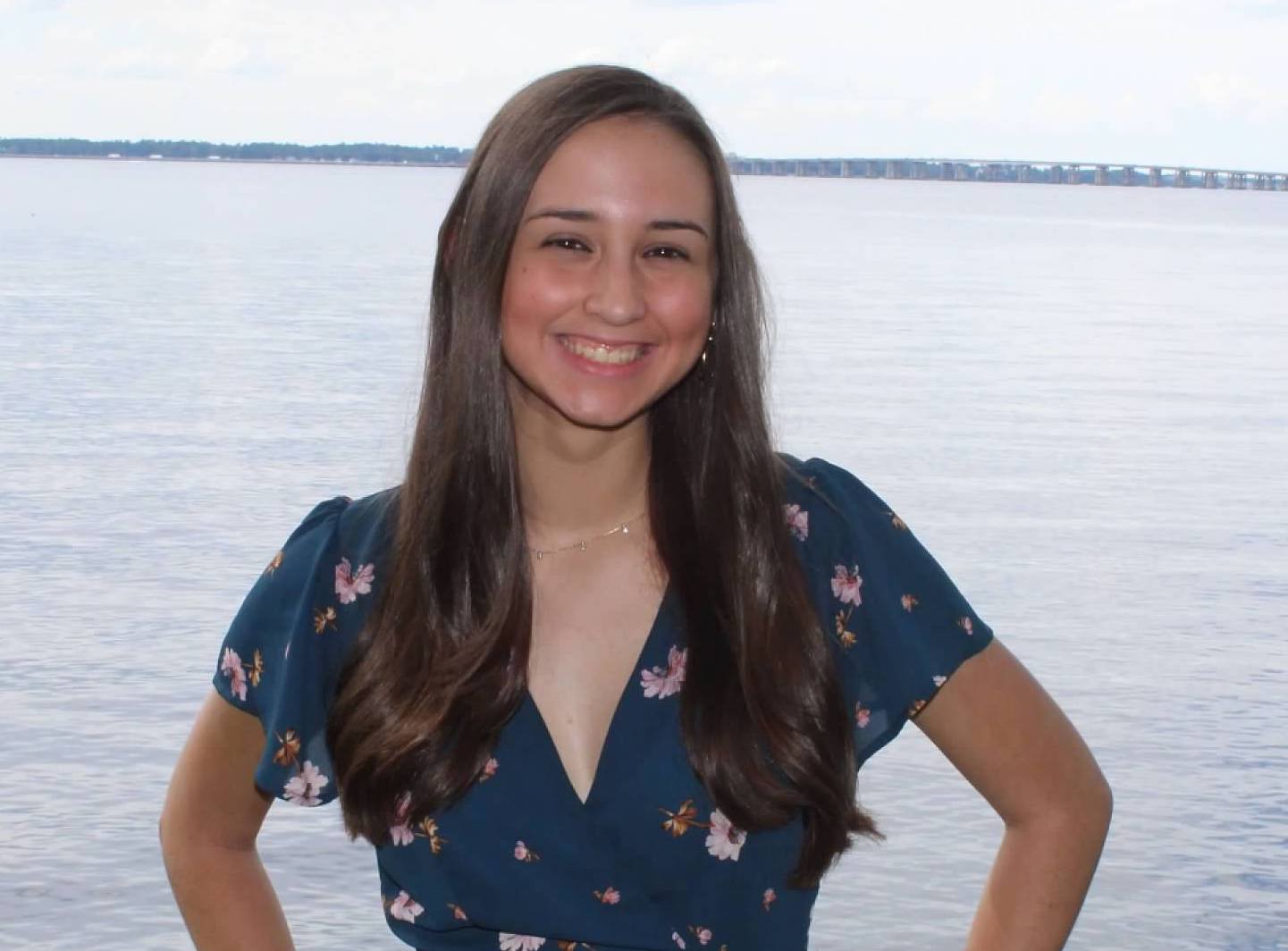
BIO
I am currently a first-year student at Florida State University majoring in Behavioral Neuroscience. I am originally from Jacksonville, Florida, where I engaged in experiences that sparked my interest in research and led to my joining the Undergraduate Research Opportunity Program (UROP) here at FSU. I am also a member of the honors program as well as various neuroscience and pre-medical clubs and organizations. I enjoy working with children in all capacities and devote my time to pursuing this interest, volunteering and becoming involved with correlating academic study. In the future, I hope to continue to study children's development related to my career goal of entering the medical field as a physician.
Peer-Mediated Modified Schema Based Instruction Targeting Mathematical Problem Solving for Students with Extensive Support Needs
Authors: Lily England, Deidre GilleyStudent Major: Behavioral Neuroscience
Mentor: Deidre Gilley
Mentor's Department: Department of Special Education Mentor's College: College of Education Co-Presenters: Emily Dillon, Bianca Hamm, Amanda Ravins
Abstract
The purpose of this study was to evaluate peer-mediated modified schema based instruction (MSBI) on the mathematical word problem solving of secondary-aged students with extensive support needs (i.e., autism spectrum disorder, intellectual disability, multiple disability). In this QUAN-qual mixed methods single case research (MMSCR) design, participants include five peer mentees with ESN and four peer mentors without disabilities across four phases (i.e., baseline, intervention, generalization, and maintenance). This study is evaluating the independent variable of MSBI on three dependent variables including: critical steps completed independently correct, number of word problems solved independently correct, and total number of steps completed independently correct. The research team is using a multiple-probe across participants design for their quantitative analysis and descriptive statistics, thematic analysis, and triangulation of multiple sources for their qualitative analysis. The research team is conducting this MMSCR to add “narrative flesh on the bones of experimental and statistical analysis” to support replication and generalization (Onghena et al., 2019). By doing this, they are evaluating the casual relationship between the independent and dependent variables as well as conducting in-depth investigation of the practical significance of the intervention (Kazdin, 1999; Perdices et al, 2009) as well as the perceived feasibility, appropriateness, and meaningfulness of the intervention (Onghena et al., 2019). Their results are consistent with previous MSBI research and currently represent a functional relation between the intervention and the primary dependent variable. This study is ongoing. Thus, further reports of limitations, generalization, and maintenance data will be disclosed in the future.
Keywords: autism spectrum disorder, problem solving, intellectual disability
22nd annual Undergraduate Research Symposium
Ashley Bishop Poster Session 3: 11:00- 11:45/Poster #2

BIO
Ashley Bishop is a second-year student at Florida State University's College of Arts and Sciences, where she is pursuing a degree in Cell and Molecular Neuroscience (BS) and a minor in Chemistry. She is from Palm Beach County, Florida and is interested in neuroscience research specifically in nervous system disorders, such as Parkinson's Disease and Post Traumatic Stress Disorder. Upon completion of undergraduate studies, she intends to apply to medical school to further her knowledge of medicine and progress toward a career as a surgeon.
Prosodic Contributions to Intelligibility in Dysarthria
Authors: Ashley Bishop, Micah E. HirschStudent Major: Cell and Molecular Neuroscience
Mentor: Micah E. Hirsch
Mentor's Department: School of Communication Science and Disorders Mentor's College: College of Communication and Information Co-Presenters: Meredith Strickland
Abstract
Dysarthria is a neurologic speech disorder that affects the accuracy, speed, and strength of the movement required for speech production. As a result of these speech deficits, speech intelligibility, or how well one is understood, is nearly always impaired in speakers with dysarthria. Many factors contribute to speech intelligibility, including prosodic features such as articulation rate, pitch variation, and intensity variation. This study evaluates the relationship between prosodic features and intelligibility in speakers with dysarthria. Previously recorded readings of the Grandfather Passage from 20 speakers with dysarthria were used in this study. Additionally, seventy naive listeners were recruited to provide two measures of speech intelligibility: (1) orthographic transcriptions and (2) visual analog scale (VAS) ratings of intelligibility. Prosodic measures, including articulation rate, pitch variation, and intensity variation, were measured from the speech samples. Multiple linear regression will be used to investigate the predictive relationship between prosodic features of speech with speech intelligibility in speakers with dysarthria. The models will examine both the relationship of these prosodic measures with OT scores and VAS ratings of intelligibility. The findings will provide a deeper understanding of how prosodic features predict speech intelligibility in speakers with dysarthria.
Keywords: Dysarthria, Speech Intelligibility, Prosody
22nd annual Undergraduate Research Symposium
Arath Salazar Poster Session 2: 10:00-10:45/Poster #1

BIO
I am currently a sophomore student majoring in Biology and recently became a dual major in Public Health. My main interests when it comes to sciences and academics delves into microbiology and infectious diseases considering how something so small can cause such a great deal of harm. When I am not focusing on my academics I am involved with some student organizations, namely the Hispanic Honor Society, Swing Dance Club, and NUSA/ NRP (Nu Rho Psi). Additionally, I am currently training to be a UROP leader for the next school year.
Hidden social dimensions in science
Authors: Arath Salazar, Dr. Ronald DoelStudent Major: Biology & Public Health
Mentor: Dr. Ronald Doel
Mentor's Department: History Mentor's College: Arts and sciences Co-Presenters:
Abstract
From the end of the 19th century into the 21st century, the ways that scientists and scientific activities have been portrayed in the United States has changed dramatically. Many Americans learned about scientific practices through published stories and photographs. Editors could select certain available photographs over others, sometimes reinforcing stereotypes and myths. During the Cold War era (1947-1989), the majority of scientists portrayed in popular media were men, most of them married. But a number of prominent researchers, promoted as exemplary scientists by the U.S. Information Agency and companies such as General Electric, did not fit these gendered and social expectations. This study surveys the lives of four eminent scientists (one male, three female) who did not conform to popular cultural conceptions at the time. Appreciating the diversity of scientists active in the past can help promote positive change and acceptance of minorities, including queer-inclined individuals, for present and future generations.
Keywords: History, science, era, cold war
22nd annual Undergraduate Research Symposium
Malia Hallway Poster Session 3: 11:00- 11:45/Poster #46
BIO
Hello, my name is Malia Hallway and I was born and raised in Coral Springs, Florida. Ever since I was a child, I was in love with the environment and working in the field. After lab experience in both high school and college, I can't wait to grow my experience in the field moving forward! In the future, I hope to be traveling and researching more the Earth has to offer.
Did Rock Metamorphism Cause a Mass Extinction?
Authors: Malia Hallway, Dr. Emily StewartStudent Major: Environmental Science
Mentor: Dr. Emily Stewart
Mentor's Department: Geology Mentor's College: Yale Co-Presenters: Isabelle Barta
Abstract
Metamorphism in rocks can conceivably cause mass extinctions. The purpose of this study is to research a potential, but probable cause of the end-Triassic mass extinction event. It has been suggested that when carbon-rich rocks or sediments are heated up quickly it can affect global warming negatively as well as cause a mass extinction. We are focusing on samples that are found in the sills of the Central Atlantic Magmatic Province (CAMP) that are found underground in the elbow of Florida. These samples have come from the Florida Geologic Survey and will be used to test the deep carbon release of metamorphism in rocks. In order to conduct this research we looked at files from the geologic survey to identify the wells that intertwine with CAMP sills, then we look at the thin sections of the rocks found in the wells, then we did computer programming to calculate certain values at different temperatures and pressures of our rock equation, and then we did chemical analysis of the rocks in the MagLab. So far, there are no results to report, but this project is ongoing.
Keywords: Geology, Extinction, Metamorphism
22nd annual Undergraduate Research Symposium
Melanie Leon Poster Session 6: 2:30 - 3:15/Poster #38

BIO
Melanie Leon is a second-year student from Miami, FL majoring in English Literature with a minor in Criminology. Leon plans to attend law school after graduation. Outside of her work researching Latinx Shakespearean productions, Leon is a part of the Honors Program, the Honors Legal Scholars Program, the Residential Conduct Board, and was a recent participant in the FSU College of Law Summer for Undergraduates Program. Her research interests include literature and law.
Latinx Shakespeares
Authors: Melanie Leon, Dr. Carla Della GattaStudent Major: English Literature
Mentor: Dr. Carla Della Gatta
Mentor's Department: English Mentor's College: College of Arts and Sciences Co-Presenters: Sydney Harnage
Abstract
Latinx Shakespearean productions have been largely undertheorized throughout history despite their cultural significance and prevalence throughout numerous communities. In an effort to make available this archive of Latinx Shakespearean productions, this project utilizes data gathered by Dr. Carla Della Gatta. Organizing the research conducted on various Latinx themes in Shakespearean adaptations, the relationship between Shakespeare and Latinx culture, and the impact of the “West Side Story Effect,” a term coined by Dr. Della Gatta, results in an increase in the amount of information regarding Latinx Shakespeares that is available to the general public. The following research aims to compose an easily accessible database of Latinx Shakespearean productions, while providing insight into their importance, unique qualities, and impacts on communities around the country.
Keywords: Shakespeare, Latinx, theatre, English, database

